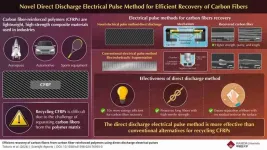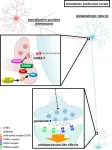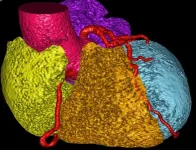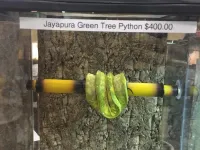(Press-News.org)
The world is hurtling rapidly towards a developed future, and carbon fiber-reinforced polymers (CFRPs) play a key role in enabling technological and industrial progress. These composite materials are lightweight and highly strong, making them desirable for applications in various fields, including aviation, aerospace, automotive, wind power generation, and sports equipment.
However, recycling CFRPs presents a significant challenge, with waste management being a pressing issue. Conventional recycling methods require high-temperature heating or chemical treatments, which result in high environmental impact and elevated costs. Moreover, it has been a challenge to recover high-quality carbon fibers. In this regard, electrohydraulic fragmentation has been proposed as a promising option. In this technique, intensive shockwave impulses generated by high-voltage discharge plasmas are applied along the interfaces of different materials to separate the various components.
While this method is lucrative, can we do better? Answering this question, a team of researchers from Waseda University, led by Professor Chiharu Tokoro from the Department of Creative Science and Engineering, and including Keita Sato, Manabu Inutsuka, and Taketoshi Koita, has come up with a novel direct discharge electrical pulse method for efficiently recycling CFRPs. Their findings have been published in the journal Scientific Reports on November 30, 2024.
Tokoro talks about the motivation behind their present work, stating: “In our previous studies, we had already established research expertise in generating shock waves in water using electrical pulse phenomena to efficiently fragment difficult-to-process materials. However, in applications such as lithium-ion batteries, we discovered that direct discharge, which utilizes Joule heating and vapor expansion of the material itself, is more effective for high-efficiency separation than relying on shock waves. We now apply this approach to CFRP, hypothesizing that it could achieve more efficient separation compared to current methods.”
The direct discharge electrical pulse technique leverages Joule heat generation, thermal stress generation, and expansion force due to plasma generation, foregoing the need for heating or chemicals. The researchers compared this method with electrohydraulic fragmentation by examining the corresponding physical properties of the recovered carbon fibers, including length, tensile strength, resin adhesion, and structural degradation, as well as the energy efficiency in terms of fiber separation. They found that their new technique is more effective for carbon fiber recovery. It preserves relatively longer fibers with higher strength and also precisely separates CFRPs into individual fibers without retaining any residual resin on the surface.
Furthermore, the direct discharge approach improves energy efficiency by a factor of at least 10 compared to traditional alternatives, while reducing environmental impact and promoting resource utilization.
Therefore, this technology is anticipated to accelerate CFRP recycling, contributing significantly to the development of a sustainable society. According to Tokoro, "Our research findings have numerous applications, pertaining to the recycling of CFRPs from spent aircraft components, automotive waste, and wind turbine blades. Thus, the present innovation supports sustainability across industries by enabling efficient resource recovery and reducing environmental impact.”
Overall, this work is expected to further the United Nations Sustainable Development Goals of Industry, Innovation and Infrastructure (SDG 9) and Responsible Consumption and Production (SDG 12).
***
Reference
DOI: https://doi.org/10.1038/s41598-024-76955-0
Authors: Chiharu Tokoro1,2, Keita Sato1, Manabu Inutsuka3, and Taketoshi Koita1
Affiliations:
1Department of Creative Science and Engineering, Waseda University, Japan
2Faculty of Engineering, The University of Tokyo, Japan
3Waseda Center for a Carbon Neutral Society, Waseda University, Japan
About Waseda University
Located in the heart of Tokyo, Waseda University is a leading private research university that has long been dedicated to academic excellence, innovative research, and civic engagement at both the local and global levels since 1882. The University has produced many changemakers in its history, including nine prime ministers and many leaders in business, science and technology, literature, sports, and film. The University has strong collaborations with overseas research institutions and is committed to advancing cutting-edge research and developing leaders who can contribute to the resolution of complex global social issues. The University has set a target of achieving a zero-carbon campus by 2032, which is in line with the Sustainable Development Goals (SDGs) adopted by the United Nations in 2015. To learn more about Waseda University, visit https://www.waseda.jp/top/en.
About Professor Chiharu Tokoro from Waseda University
Chiharu Tokoro has been a Professor at the Department of Creative Science and Engineering at Waseda University, Japan, since 2015, and is also associated with the Faculty of Engineering, The University of Tokyo. She received a B.E. in Resources Engineering from Waseda University in 1998, and an M.E. and Ph.D. in Geosystems Engineering from The University of Tokyo in 2000 and 2003, respectively. Her research interests include resource separation technologies for the realization of a circular economy, environmental remediation and purification technologies for resources, and powder simulation technology for energy-saving process development. She has published over 200 research articles, which have been cited over 2,000 times.
END
The global burden of anxiety- and depression-related disorders is on the rise. While multiple drugs have been developed to treat these conditions, current medications have several limitations, including slow action and adverse effects with long-term use. This underscores the urgent need for novel, rapidly-acting therapeutic agents with minimal side effects.
The delta opioid receptor (DOP) plays a key role in mood regulation, making it a promising target for therapeutic intervention. Studies have shown that selective DOP agonists (compounds that activate DOP), such as SNC80 ...
CLEVELAND and CHAMPAIGN-URBANA, ILL.—Diamond, often celebrated for its unmatched hardness and transparency, has emerged as an exceptional material for high-power electronics and next-generation quantum optics. Diamond can be engineered to be as electrically conductive as a metal, by introducing impurities such as the element boron.
Researchers from Case Western Reserve University and the University of Illinois Urbana-Champaign have now discovered another interesting property in diamonds with added boron, known as boron-doped diamonds. Their findings could pave the way for new types ...
A new study from Oxford University has uncovered why the deep neural networks (DNNs) that power modern artificial intelligence are so effective at learning from data. The new findings demonstrate that DNNs have an inbuilt ‘Occam's razor,’ meaning that when presented with multiple solutions that fit training data, they tend to favour those that are simpler. What is special about this version of Occam’s razor is that the bias exactly cancels the exponential growth of the number of possible solutions with complexity. The study has been published ...
An international team of researchers led by the University of California San Diego has developed a new strategy to enhance pharmaceutical production in Chinese hamster ovary (CHO) cells, which are commonly used to manufacture protein-based drugs for treating cancer, autoimmune diseases and much more. By knocking out a gene circuit responsible for producing lactic acid—a metabolite that makes the cells’ environment toxic—researchers eliminate a primary hurdle in developing cells that can produce higher amounts of pharmaceuticals like Herceptin and Rituximab, without compromising their growth or energy production.
The research, published on Jan. 14 in Nature Metabolism, ...
New research funding will investigate the early stages of heart disease associated with chronic kidney disease led by the University of Birmingham.
Dr Davor Pavlovic will lead an international research team after receiving almost £300,000 from the British Heart Foundation to understand the mechanisms driving the early stages of CKD-associated cardiomyopathy.
The research approach will allow detailed investigation of cellular and electrophysiological changes before irreversible damage to the heart occurs. Researchers will also test whether in the setting of CKD, early treatment can reverse or prevent heart disease.
The research will be ...
CLEVELAND—Researchers at Case Western Reserve University, University Hospitals and Houston Methodist will harness the power of artificial intelligence (AI) to more accurately predict risk of heart failure and other cardiovascular events, including estimating when an adverse event might occur, by developing an AI model that “learns” from patient scans.
Cardiovascular disease is the leading cause of death worldwide, claiming over 17 million lives every year, according to the American Heart Association. Accurately ...
New Haven, Conn., Jan. 14, 2025—After four years of decline, U.S. patent grants headed upward, rising 3.8 percent from calendar year 2023 to 324,043 and Samsung retained the top spot for the third year in a row, according to IFI CLAIMS Patent Services, the world’s most trusted patent data source.
IFI CLAIMS Patent Services is a Digital Science company that compiles and tracks data from the U.S. Patent and Trademark Office (USPTO) and other patent-issuing agencies around the globe. IFI translates its world-leading data into an annual U.S. Top 50 and ...
Wildlife trade poses one of the greatest threats to the survival of numerous species. According to the Intergovernmental Science-Policy Platform on Biodiversity and Ecosystem Services (IPBES) at least 50,000 species are involved in trade. However, while this figure already seems huge, it risks overlooking less traditional sectors of wildlife trade, such as the pet or fashion trade. For instance, recent data shows that the number of butterflies traded exceeds the total number of terrestrial arthropods in the IPBES assessment. This raises a critical question: How many ...
A new paper in Nicotine & Tobacco Research, published by Oxford University Press, finds that smoking has a negative effect on earnings among younger workers. This is particularly true among the less well educated.
The adverse health effects of smoking are well known. Smoking increases the risk of various cancers, respiratory issues, and cardiovascular diseases, with approximately 14% of all deaths in 2019 attributed to smoking. Despite smoking rates declining since the 1990s, in 2019 18% of women and 27% of men in high income countries still smoked.
Tobacco smoking has ...
Society is often vulnerable to disasters, but how humans manage during and after can turn devastation into opportunities for improved resilience.
For instance, private wells are attracting attention as an alternative resource for securing water for daily use and consumption in the event the water supply is cut off after a disaster. However, there are few records on how wells are used in the confusion of disasters, so detailed research is needed to promote the use of emergency wells.
Professor Takahiro Endo of the Graduate School of Sustainable System Sciences at Osaka Metropolitan University conducted a survey on the use ...






